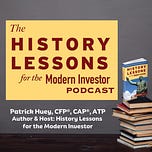The History Lessons Podcast is evolving! I hope you will continue to enjoy “This Week in History” for frequent updates. Stay tuned for interviews with history writers and makers when the rebooted podcast launches later this fall.
August 19, 1848 - The New York Herald reported the discovery of gold in California, igniting the Gold Rush and a massive migration to the western United States.
The California Gold Rush began in January 1848 when James W. Marshall discovered gold at Sutter's Mill in Coloma, California. News of the discovery quickly spread, leading to a mass migration of people from across the United States and around the world, all hoping to strike it rich. This influx of prospectors, known as "forty-niners" (after the peak year of 1849), dramatically increased California's population, transforming it from a sparsely populated region into a bustling area with booming towns and cities. The Gold Rush had significant economic, social, and political impacts. It contributed to California's rapid economic development, as the influx of people and the need for infrastructure spurred growth in various industries, including mining, transportation, and commerce. San Francisco, in particular, grew from a small settlement into a major port and commercial hub. Politically, the Gold Rush expedited California's admission to the Union as the 31st state in 1850, just two years after the discovery of gold. This rapid statehood highlighted the significant demographic and economic changes occurring in the region. However, the Gold Rush was short-lived. By the mid-1850s, the easily accessible gold had been largely exhausted, and mining became more industrialized and dominated by larger companies. Many individual miners, unable to compete, left or found other work. Despite this, the legacy of the California Gold Rush persisted, leaving an indelible mark on the history of California and the United States.
Here are five Lessons for Modern Investors from the California Gold Rush:
1. The Power of Timing: Early Entry is Often Key. In 1848, James W. Marshall's discovery of gold at Sutter's Mill set off a frenzy. Those who arrived early, known as the "forty-niners," had the best chances of striking it rich. The lesson here is clear: being early to recognize and act on opportunities can make a significant difference. Whether it's a new technology, an emerging market, or a stock poised for growth, early entry can yield substantial rewards. However, it's also important to remain cautious and avoid rushing into investments without proper research.
2. Diversification is Essential: Don't Put All Your Gold Nuggets in One Basket. Many who flocked to California hoped to strike it big by panning for gold. But only a few actually found fortune in the gold itself. Interestingly, some of the biggest winners of the Gold Rush were those who diversified their efforts—selling supplies, tools, and services to miners. Levi Strauss, for example, capitalized on the need for durable clothing, laying the foundation for a global brand. For modern investors, this underscores the importance of diversification. Rather than betting everything on one high-risk investment, spread your resources across various assets to mitigate risk and increase your chances of success.
3. Beware of Hype: Not All That Glitters is Gold. The Gold Rush was fueled by stories of easy riches, drawing people from around the world. However, the reality was far less glamorous. Many prospectors left empty-handed or worse off than when they arrived. The modern equivalent can be seen in market bubbles, where hype drives prices to unsustainable levels. Think of the dot-com bubble or the cryptocurrency frenzy—investors who bought into the hype without understanding the fundamentals often faced steep losses. Always do your due diligence and avoid making decisions based solely on market noise. Price action is only one data point.
4. Adaptability Wins: Be Ready to Pivot. The Gold Rush was an unpredictable venture. Some miners, after failing to find gold, pivoted to other endeavors like farming, real estate, or starting businesses to serve the growing population. Those who could adapt to changing circumstances often found success in unexpected ways. For investors, this highlights the importance of flexibility. Markets are dynamic, and economic conditions can shift rapidly. Pivoting your strategy in response to new information or changing market conditions is crucial for long-term success.
5. Long-Term Vision: Wealth Isn't Built Overnight. While the Gold Rush is often associated with quick riches, the true wealth was built by those who had a long-term vision. Many of the most successful individuals were not the ones who struck it rich quickly, but those who invested in the infrastructure, communities, and businesses that arose to support the growing population. This lesson is vital for modern investors: wealth is rarely accumulated overnight. Long-term investments in solid companies, real estate, or other assets that grow steadily over time often yield more reliable and sustainable returns.
Remember, investing is not just about chasing the next big opportunity; it's about building sustainable wealth through informed and strategic decisions.





